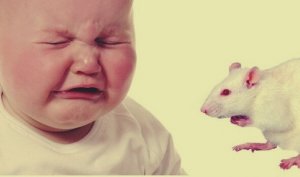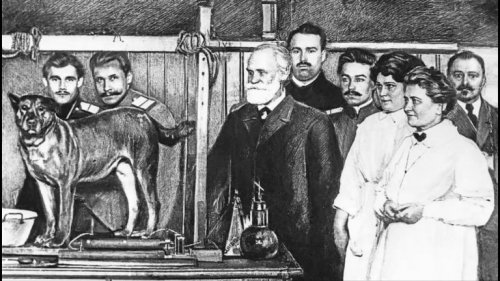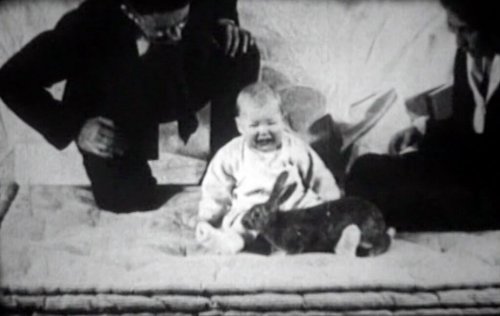The Little Albert Experiment

John B. Watson is known as one of the fathers of behaviorism. His main intellectual reference was Pavlov, the Russian physiologist who made the first discoveries about conditioning. Consequently, Watson carried out a famous study called the Little Albert experiment.
Ivan Pavlov carried out an extremely famous experiment with dogs. You could say it was one of the most important introductory chapters that helped initiate psychology as a true science. He discovered the basic aspects of the stimulus-response and established the principles of classical conditioning.
Watson tried to replicate Pavlov’s experiment with the dogs through the little Albert experiment. In other words, he experimented with humans. In this specific case, he manipulated a baby in order to prove his hypothesis.
Pavlov’s experiments
Ivan Pavlov was a great researcher. After studying different disciplines, he became interested in physiology. A physiological element was precisely what allowed him to discover conditioning from the stimulus-response scheme.
Pavlov noticed that dogs would salivate before being fed. In other words, he discovered that the dogs prepared themselves to eat before doing so. They would react to the stimulus. That observation encouraged him to start experimenting. Later, he started introducing different stimuli before serving the dogs food, kind of like a notification.

The most famous element of all was a bell. He got to prove that the dogs would always salivate when they heard the bell ring. They knew that the sound of the bell preceded the arrival of their food. Pavlov had conditioned them. The sound was the stimulus and it triggered the salivation, which was the response.
Background information on the Little Albert experiment
Watson was a radical positivist. He thought that human behavior should be studied exclusively based on the behaviors that were already learned. Genetic, unconscious, or instinctive elements made no sense to him. He just wanted to study the behavior that he could actually observe.
Watson was a researcher at John Hopkins University in Baltimore. He began with the idea that most if not all human behavior could be explained by the person’s learning history based on conditioning. Because of this, he thought it was a good idea to prove that Pavlov’s conclusions could be applied to human beings as well.
Watson went to an orphanage along with his assistant Rosalie Rayner. Then, they picked an 8-month-old baby, the son of one of the nurses from the orphanage. He was very neglected and lived in a very cold, vile environment. The baby seemed excessively calm, though. The people there said he had barely ever cried since he had been born. This was the beginning of the Little Albert experiment.
A controversial experiment
In the first phase of this experiment, they showed Albert different stimuli. The goal was to observe which one of them scare him. They noticed he would feel frightened only when hearing loud sounds. This is something common in babies. Albert didn’t show any signs of fear in front of animals or fire.
Then, they began inducing fear by conditioning. They presented a white rat to Albert. At first, he wanted to play with it. However, when he tried to do it, Watson would make a very loud sound which made him feel scared. After repeating the same cycle a few times, the baby ended up fearing the rat. After that, they proceeded to present other animals like rabbits, dogs, and even fur coats. They ended up conditioning Albert to all of them. He felt fear when being in the presence of those stimuli.

They subjected the baby to these experiments for a long time. It actually went on for almost a year. In the end, the baby went from being calm to constantly feeling anxious. It got to a point where he even felt scared when he saw a Santa Claus mask. They made him touch it and he started crying incessantly.
During the second part of the experiment, he decided to revert the conditioning. This meant “deconditioning” the fears he had previously conditioned. However, that never got to happen. The university kicked Watson out due to his controversial experiment and for having started a romance with his assistant.
After the experiment
We don’t know what happened to the baby after the experiment. However, there are articles that state that the kid died at the age of 6 due to congenital hydrocephalus. If that’s true, then the results of this evil experiment are very questionable.
The Little Albert experiment is one of the most famous studies in the history of psychology. Its claims, conclusions, and the violation of a large number of rules made it very controversial.
“Give me the baby and my world to bring it up in and I’ll make it crawl and walk; I’ll make it climb and use its hands in constructing buildings of stone or wood; I’ll make it a thief, a gunman, or a dope fiend. The possibility of shaping in any direction is almost endless.”
-John B. Watson-
John B. Watson is known as one of the fathers of behaviorism. His main intellectual reference was Pavlov, the Russian physiologist who made the first discoveries about conditioning. Consequently, Watson carried out a famous study called the Little Albert experiment.
Ivan Pavlov carried out an extremely famous experiment with dogs. You could say it was one of the most important introductory chapters that helped initiate psychology as a true science. He discovered the basic aspects of the stimulus-response and established the principles of classical conditioning.
Watson tried to replicate Pavlov’s experiment with the dogs through the little Albert experiment. In other words, he experimented with humans. In this specific case, he manipulated a baby in order to prove his hypothesis.
Pavlov’s experiments
Ivan Pavlov was a great researcher. After studying different disciplines, he became interested in physiology. A physiological element was precisely what allowed him to discover conditioning from the stimulus-response scheme.
Pavlov noticed that dogs would salivate before being fed. In other words, he discovered that the dogs prepared themselves to eat before doing so. They would react to the stimulus. That observation encouraged him to start experimenting. Later, he started introducing different stimuli before serving the dogs food, kind of like a notification.

The most famous element of all was a bell. He got to prove that the dogs would always salivate when they heard the bell ring. They knew that the sound of the bell preceded the arrival of their food. Pavlov had conditioned them. The sound was the stimulus and it triggered the salivation, which was the response.
Background information on the Little Albert experiment
Watson was a radical positivist. He thought that human behavior should be studied exclusively based on the behaviors that were already learned. Genetic, unconscious, or instinctive elements made no sense to him. He just wanted to study the behavior that he could actually observe.
Watson was a researcher at John Hopkins University in Baltimore. He began with the idea that most if not all human behavior could be explained by the person’s learning history based on conditioning. Because of this, he thought it was a good idea to prove that Pavlov’s conclusions could be applied to human beings as well.
Watson went to an orphanage along with his assistant Rosalie Rayner. Then, they picked an 8-month-old baby, the son of one of the nurses from the orphanage. He was very neglected and lived in a very cold, vile environment. The baby seemed excessively calm, though. The people there said he had barely ever cried since he had been born. This was the beginning of the Little Albert experiment.
A controversial experiment
In the first phase of this experiment, they showed Albert different stimuli. The goal was to observe which one of them scare him. They noticed he would feel frightened only when hearing loud sounds. This is something common in babies. Albert didn’t show any signs of fear in front of animals or fire.
Then, they began inducing fear by conditioning. They presented a white rat to Albert. At first, he wanted to play with it. However, when he tried to do it, Watson would make a very loud sound which made him feel scared. After repeating the same cycle a few times, the baby ended up fearing the rat. After that, they proceeded to present other animals like rabbits, dogs, and even fur coats. They ended up conditioning Albert to all of them. He felt fear when being in the presence of those stimuli.

They subjected the baby to these experiments for a long time. It actually went on for almost a year. In the end, the baby went from being calm to constantly feeling anxious. It got to a point where he even felt scared when he saw a Santa Claus mask. They made him touch it and he started crying incessantly.
During the second part of the experiment, he decided to revert the conditioning. This meant “deconditioning” the fears he had previously conditioned. However, that never got to happen. The university kicked Watson out due to his controversial experiment and for having started a romance with his assistant.
After the experiment
We don’t know what happened to the baby after the experiment. However, there are articles that state that the kid died at the age of 6 due to congenital hydrocephalus. If that’s true, then the results of this evil experiment are very questionable.
The Little Albert experiment is one of the most famous studies in the history of psychology. Its claims, conclusions, and the violation of a large number of rules made it very controversial.
“Give me the baby and my world to bring it up in and I’ll make it crawl and walk; I’ll make it climb and use its hands in constructing buildings of stone or wood; I’ll make it a thief, a gunman, or a dope fiend. The possibility of shaping in any direction is almost endless.”
-John B. Watson-
This text is provided for informational purposes only and does not replace consultation with a professional. If in doubt, consult your specialist.







